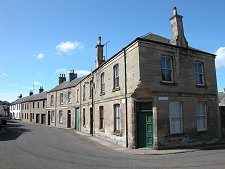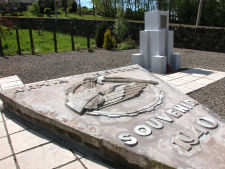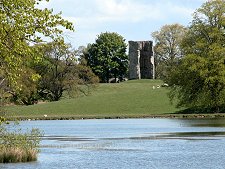 Main Street |
The village of Douglas lies on the south bank of the Douglas Water, two miles west of the junction of the A70 Ayr to Edinburgh road with the M74. The oldest part of the village lies to the north of the A70 and has roots that go back the better part of a thousand years.
Douglas grew to service the nearby Douglas Castle, home of the Black Douglas family and well placed to control the south-western approaches to the Clyde Valley. Douglas Castle was well established by 1300 and during the Wars of Independence was occupied by the English. On Palm Sunday 1307 Sir James Douglas and a few followers trapped the English garrison while they were worshipping in the castle chapel before burning it to the ground. This event, which also badly damaged the rest of Douglas Castle, became known as the Douglas Larder.
The rebuilt castle was sacked by King James II in 1455 during his suppression of the Black Douglases. A later tower house was destroyed by fire in 1755 and this was replaced by a four storey castellated mansion in 1757. Mining subsidence caused by the nearby Douglas Castle Mine led to most of the castle being demolished in the 1940s, leaving just a ruined stump.
Douglas Castle became well known as "Castle Dangerous" following publication of a novel of that name by Sir Walter Scott, and this is the name by which it is known on information signs in the village. The castle remains are a half-mile walk across parkland from Douglas itself.
Within the village the oldest structure is the ruin of St Bride's Church, dedicated to St Bride and dating back to the late 1300s, complete with a hexagonal "pencil" clock tower added in the 1560s. Originally the parish church, this serves as the mausoleum of the Black Douglas family. The parish church later moved up the hill, where it remains as Douglas St Bride's Parish Church, now accompanied by the St Bride's Centre, the village's main community facility. Between them you will find the village's main car park, which provides excellent views over the old part of Douglas and access to a set of steps leading down to the old village.
Douglas is a village whose historical roots have been overlain by centuries of industry, first by woollen mills and then by coal mining. The end result is a village with tremendous character, but which tends to be austere rather than pretty. But it has much to offer the visitor and is well worth exploring.
As well as its castle remains and its churches there is a heritage museum in the village, and more than an average collection of monuments and statues including one commemorating a Covenanter, James Gavin, who had his ears cut off for his faith. On the north-east edge of the village, where it opens out into parkland, is the Polish Memorial Garden, commemorating the Polish troops who were based in and around Douglas during the Second World War.
 The Village from the South |

|
|
|
Visitor InformationView Location on MapWhat3Words Location: ///clauses.backpacks.frost |
 Blue Tower Street |
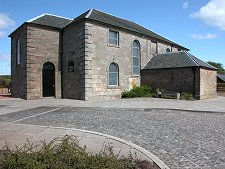 Douglas St Bride's Parish Church |
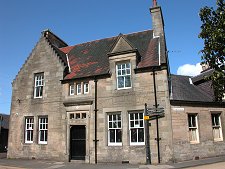 Braehead |
